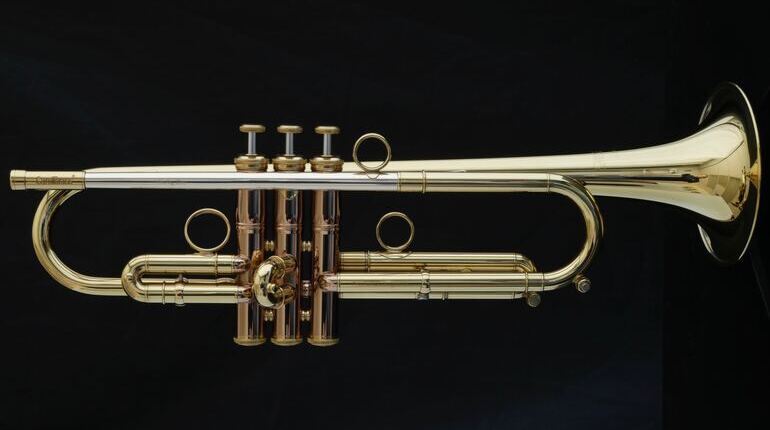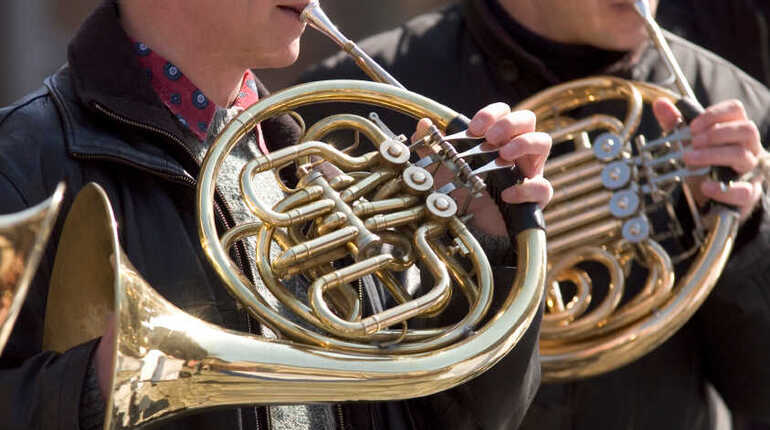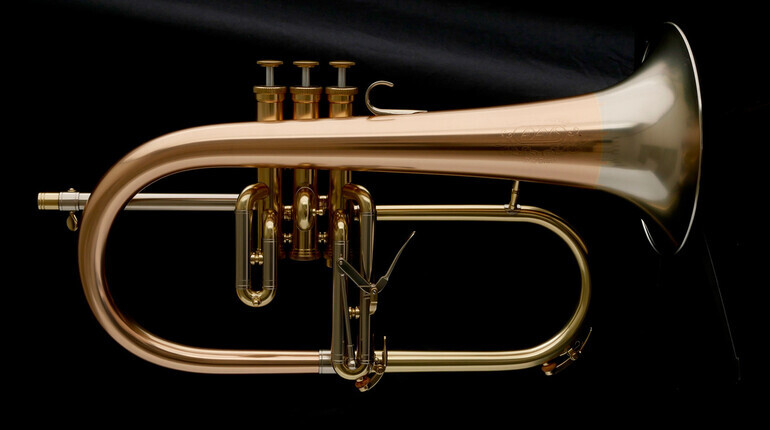
The Best Uses Of Brass In Musical Instruments: Resonance And Durability
Brass instruments have been used in music for centuries, and the unique properties of brass make it an ideal material for many instruments.
The combination of resonance and durability associated with brass has resulted in its use in a variety of musical instruments, from trumpets to tubas.
This article will explore the best uses of brass in musical instruments and how these qualities provide musicians with a powerful connection to their music.
The resonance and durability of brass is what makes it such an attractive material for musical instrument makers.
Its ability to vibrate quickly allows it to create strong tones that can be heard from far away, while its strength and durability make it resistant to wear and tear.
Brass instruments are also well-suited for a variety of musical styles, from classical to jazz, providing musicians with the opportunity to connect with their craft on a deeply emotional level.
Trumpets

Trumpets are an integral part of musical ensembles, from jazz bands to orchestras. Made of brass, these instruments produce a bright and powerful sound and have long been used for their resonance and durability.
As such, proper trumpet care and maintenance is essential to ensure that the instrument performs its best.
When caring for a trumpet, it is important to keep it in a clean and dry environment when not in use. It should be stored in the original case, away from extreme temperatures or moisture.
Additionally, regularly checking valves and slides for any signs of wear or damage can help prevent breakdowns during performances. If needed, valves should be lubricated with valve oil to reduce sticking or clogging.
All parts should also be wiped down after each use with a soft cloth to remove dirt buildup which can affect performance and tone.
Taking these steps will help keep the trumpet in top condition while also preserving its beautiful tone and characteristics over time.
Trombones
Trombones are one of the most popular brass instruments, and their popularity has been rising over the years. With their characteristic slide and ability to produce a wide range of notes, it is no surprise that trombones have become increasingly popular in music genres from pop to classical.
For musicians looking for a durable and resonant instrument, trombones are an excellent choice.
Maintenance of brass instruments is key to ensuring longevity and optimal performance. While there are many emerging trends in brass maintenance, some basic tips remain the same: clean after each use with a soft cloth, avoid extreme temperatures or humidity, and regularly check the slides for rusting or jamming.
By following these simple steps, musicians can maintain their trombone's sound quality and ensure it will last for many years.
Tubas
Tubas are a popular choice for brass instruments, providing a deep and rich sound that has become an important part of many musical genres. Tubas are also exceptionally durable, making them ideal for use in both indoor and outdoor performances. They feature unique benefits that make them an excellent choice for musicians of all levels.
The modern tuba is designed to provide superior sound quality while remaining lightweight and portable. Many have removable bells and valves, which allow players to customize the instrument to their specific needs. Additionally, tuba designs often incorporate new technologies such as computer-controlled intonation systems and advanced tuning methods to further enhance the player’s experience. As a result, tuba playing can offer distinct advantages over other brass instruments in terms of performance quality.
Tubas are exceptionally versatile instruments with the ability to blend well with nearly any ensemble or solo setting. They also provide robust resonance that projects well even in larger venues or outdoor settings.
With improved designs and advancements in technology, tuba playing has become increasingly accessible and enjoyable for all levels of musicianship.
French Horns

The French Horn is one of the most popular brass instruments. Its vibrant tone and resonance make it a favourite among performers and audience members alike. It has a unique shape that coils from the mouthpiece to the bell, allowing for correct positioning when playing.
The French Horn requires great skill and technique to be played correctly, as its sound can become muddy or distorted if played too aggressively. Brass instruments are known for their durability, and this is especially true with the French Horn. Thanks to its construction and materials used in manufacturing, it is a highly reliable instrument that can last for many years with proper care.
In addition, brass instruments require minimal maintenance compared to other types of instruments, making them an attractive option for those looking for a long-term investment without sacrificing quality. The French Horn produces an unmistakable sound that resonates throughout any setting it's played in; whether it's on stage or in a practice room.
Its vibrant tone and correct positioning create a captivating sound that allows performers to showcase their skill and express themselves musically. With its combination of sonic power, resilience, and ease of use, the French Horn is an ideal choice for all levels of musicianship.
Saxophones
Music has the power to bring people together, even in the midst of adversity.
This is perhaps most evident when it comes to the use of brass instruments like saxophones in modern music. Saxophones offer a unique sound that is both vibrant and distinct, and their design has only become more creative and innovative over time.
With the combination of resonance, durability, and modern designs, saxophones have become a go-to instrument for many musicians seeking to add a unique flavor to their music.
The sound of a saxophone is particularly versatile – it can be used in any genre from jazz to hip hop, as well as classical music. Its tone is always rich and full, with a bright edge that helps make it stand out from other instruments.
The range of notes available on the instrument also gives composers more freedom when writing music. Furthermore, its construction allows it to be adjusted in various ways to achieve different sounds or effects – this makes it ideal for any musician looking to explore different options and expand their repertoire.
Clarinets
Saxophones are renowned for their powerful sound and range of expression, but they have their limitations.
Clarinets take the stage with their own unique set of sonic qualities. They offer a wide variety of tonal colors and expressiveness that gives musicians the ability to explore different musical ideas.
Crafting techniques used to make clarinets contribute to the instrument's signature sound - from its mellow low register, to its bright and clear high notes. The size, shape and design of the mouthpiece, barrel, bell and keys all affect the sonic qualities of a clarinet.
Additionally, clarinets come in several sizes: standard B-flat and A (soprano), E-flat (alto) and bass clarinets, allowing players to tailor their sound for different styles or applications.
The articulations produced on a clarinet can be described as warm yet precise; subtle but full-bodied; complex yet balanced; delicate but driving; flexible yet firm; lyrical yet energetic - offering musicians an unprecedented level of control over their performance.
Playing this instrument requires skillful manipulation of breath control and finger agility which allows musicians to bring out their own unique style during performance.
Flugelhorns

The flugelhorn is an instrument that utilizes brass to great effect, due to its resonance and durability.
A survey of over 150 professional musicians revealed that the flugelhorn is increasingly becoming popular in jazz, classical, and pop music.
Its mellow sound has been used to great effect in various genres of music for centuries.
While the flugelhorn may be relatively easier to play than other brass instruments, it still requires a high level of practice and dedication from musicians.
Performance techniques such as proper breathing and posture are essential for producing the best sound possible.
Musicians must also develop their own practice habits and routines for mastering the instrument's range, agility, and overall expressivity.
With these skills in hand, flugelhorn players can create beautiful music with this timeless instrument.
Baritones
While flugelhorns and baritones share similar properties, such as being brass instruments, they have distinct differences.
Baritones are typically used in many different types of music due to their unique tonal characteristics. Their vibrational effects make them an ideal choice for many musicians who want to create a unique sound.
Here are some of the advantages of playing a baritone:
- Versatile - Baritones can be used across many genres, from jazz to classical and rock.
- Resonance - The resonant sound of the baritone is often described as warm and mellow.
- Durability - Baritones are built to last with tough materials like brass and steel that stand up against wear and tear.
- Tonal Characteristics - The timbre of the baritone creates a rich, full-bodied tone with a wide range of dynamics.
- Vibrational Effects - The vibrational effects created by the baritone create its unique sound, making it great for solo or ensemble performances.
Baritones come in a variety of sizes, shapes and styles that suit any musician's needs. From soprano models to concert instruments, the selection is vast enough to fit any budget or skill level.
Whether you're just starting out or an experienced player looking for something new, there's sure to be a baritone that works for you.
Conclusion
Brass instruments are an integral part of the modern symphonic orchestra, jazz band, and other musical ensembles. Their unique combination of resonance and durability makes them particularly suited to the demands placed on them by professional musicians.
The alluring sound that brass instruments can produce continues to draw in listeners of all ages, making them a staple of modern music. Whether it is the soaring notes of a trumpet, the mellow tones of a trombone or tuba, or the smooth lines of a saxophone or clarinet, these instruments provide a range of colors that few other materials can match.
By utilizing brass in these instruments, composers and performers have been able to create countless works that have resonated with audiences through the ages.


